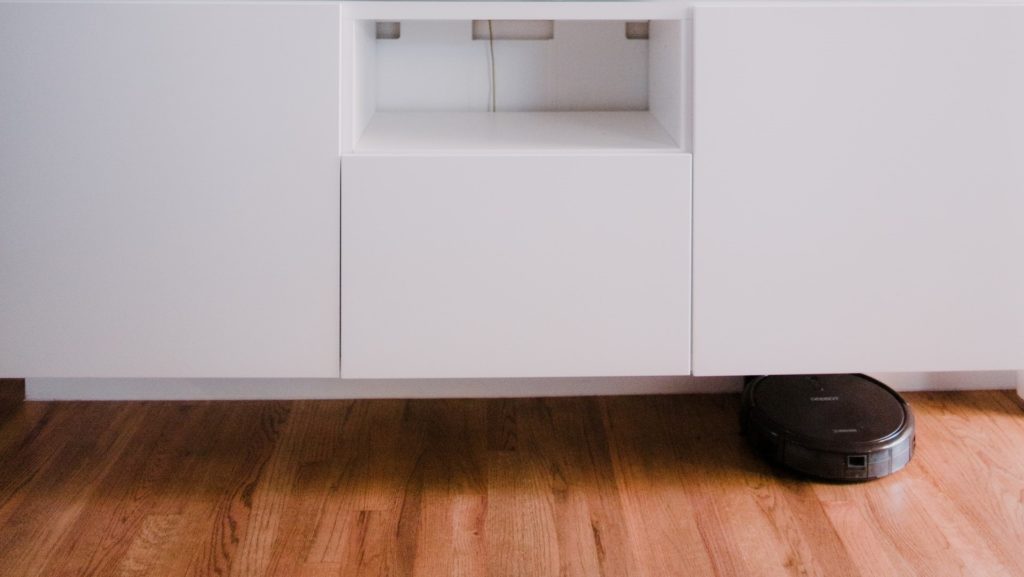
This isn’t to say that you shouldn’t get a Roomba or similar vacuum. I have one and LOVE it! They can work just fine in most homes and will likely be a good addition to yours. Just like any new addition, though, you may have a little bit of prep to do before you bring it home and putting it to work. Depending on your home, here are a few basics you will want to consider to get the most out of your little robotic helper.
Consider Your Flooring
Given that your robotic vacuum will be tasked with keeping your floor clean, it makes sense that you’ll need to think about the condition of your floors to get the most out of it. While some models work just fine on any flooring type, others may struggle with deep carpet or certain textures. Loose rugs and some other flooring features may cause occasional issues as well.
While your flooring type is a big consideration when it comes to choosing the robotic vacuum model that works best in your home, floor features will also affect how well any model will work once it gets there. Rug grippers or other options that help keep rugs from slipping will be a big help, and large floor furnace intake grates or similar features you might find in older homes might cause problems with your robot’s navigation. Secure or cover as much as you can when it comes to prepping the floor, giving your vacuum some help in achieving full coverage of your floors.
Make a Clean Path
Clutter can be a big problem for anyone when trying to clean up, but it is especially troublesome for robotic vacuums that can only rely on sensors and programming to get around. Take the time to pick up before your Roomba runs so that it can fully clean the floor, and try to space furniture and other static objects in such a way that the vacuum can navigate around them or go under them for cleaning. This is especially important if you have features such as catty-cornered couches or other large objects with space behind them, as your robotic vacuum won’t be able to clean the area if it can’t get to it.
Along these same lines, make sure that there’s a clear way for your Roomba to get out of any area that it can get into. While this might sound like a no-brainer, it may be possible for it to access areas such as a sunken living room but not be able to easily get out the way it came in. This could lead to your robotic vacuum getting stuck and possibly running down its battery trying to get out of the area.
Roomba-Proofing Your Home
Most robotic vacuums have sensors to detect possible collisions, falls, and other dangers, but there’s only so much that these sensors can accomplish. Don’t be afraid to put up baby gates, place pool noodles on the floor, or take other precautions to keep your Roomba from accessing an area where a fall or other potential damage could occur. If you have a vacuum model that features app connectivity, you should also set up alerts so that your vacuum can message you in case it runs into any potential peril. Robotic vacuums are an investment, so it makes sense that you’d want to keep them safe.
Photo by Blake Carpenter on Unsplash